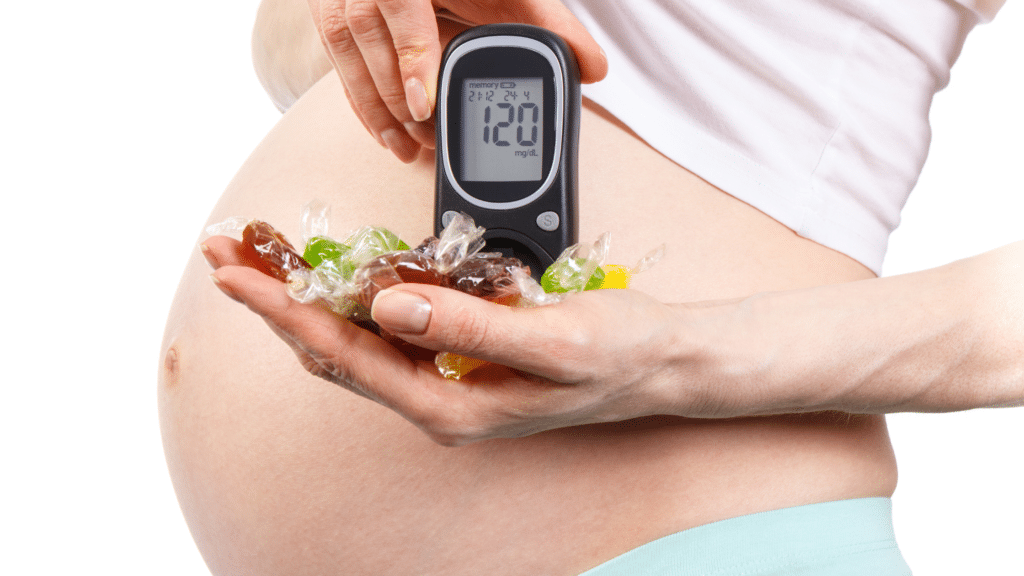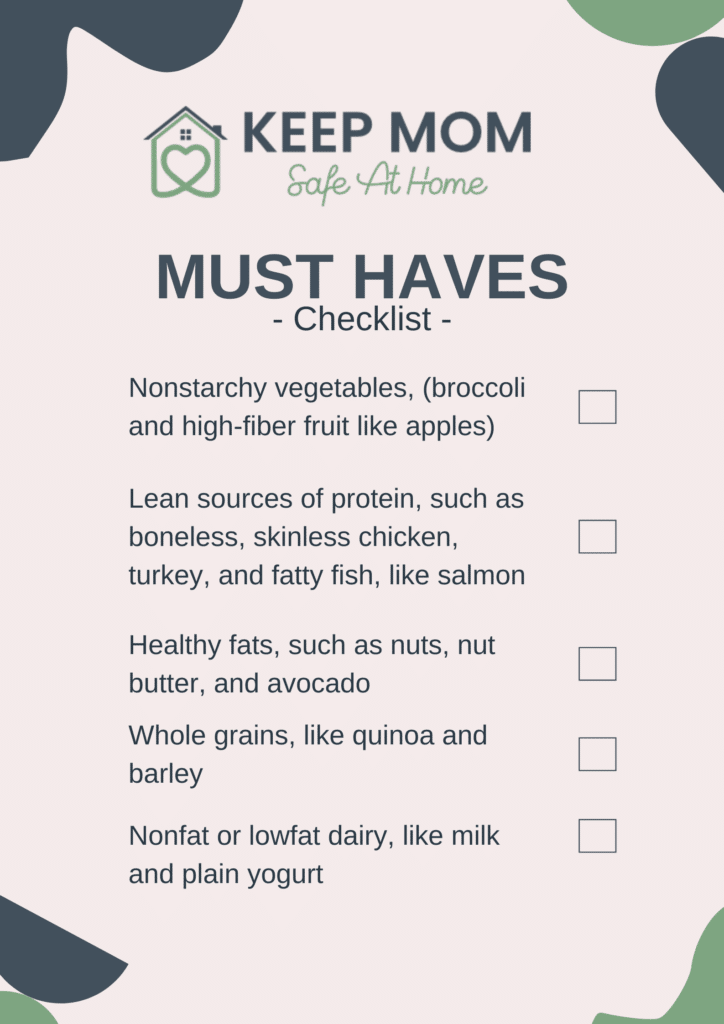Table of Contents
Diabetes is a serious condition, and it can be even more difficult to manage in seniors.
If you are a caregiver for a senior with diabetes, it's important to know how to help them stay on track.
Here are some tips for better managing diabetes in seniors.
Diabetes is a condition in which your blood glucose, often known as blood sugar, is excessively high.
The pancreas cannot produce enough insulin and is not utilized well by the body.
Insulin is a hormone that helps to keep blood sugar levels in check. It allows the body to use glucose for energy.
There are variations of this condition, and if not managed properly, it can lead to fatal health problems.
Certain types of diabetes can be reversed, like prediabetes and gestational diabetes.
Prediabetes conditions can be dealt with through a healthier lifestyle, proper diet, and sleep.
There are also recent studies saying that Type 2 diabetes can also be reversed, but there are still not enough evidence to back it up.
Type 1 Diabetes is also known as insulin-dependent or childhood-onset diabetes.
It's characterized by an autoimmune reaction that prevents the body from producing insulin. In other words, your immune system attacks beta cells and doesn't respond the way it should.
The absence of insulin limits the transport of glucose into other cells. Instead, it pools in the blood, causing other cells to dry and starve.
Because of the high concentration of sugar in the blood, your body gets rid of it through urine.
This process eventually causes dehydration and weight loss.
It affects around 5-10% of people with diabetes. And it's most commonly found in children, teenagers, and young adults.
Symptoms usually include thirst, excessive excretion of urine, constant hunger, and fatigue.
Compared to other types of diabetes, the symptoms can range from subtle to severe.
Kids who have Type 1 diabetes can experience an upset stomach or vomiting, blurry vision, and unexplained weight loss.
Some even experience bedwetting and a fruity-smelling breath.
There are also frequent skin infections and even UTIs and vaginal infections for women.
In extreme cases, people suffering from Type 1 diabetes can also experience loss of consciousness.
At the moment, there is no known treatment for Type 1 diabetes except for insulin injections.
There's also exercise, and understanding of how to manage the disease better.
Type 2 Diabetes is also known as non-insulin-dependent diabetes or adult-onset diabetes.
Nowadays, it can also affect kids and teens because of childhood obesity.
Excess body weight and physical inactivity are the leading causes of this diabetes type.
The symptoms are comparable to type 1 diabetes, but they are usually milder.
Physical symptoms include acanthosis nigricans, where pigmentation happens in crevices like the neck, armpits and groin areas.
This can also be a sign that the body is becoming resistant to insulin.
There are certain factors that affect a person’s chance of developing Type 2 diabetes.
These can include being overweight, your genes, your ethnicity, or having too much glucose from the liver.
People suffering from insulin resistance often have metabolic syndrome.
Here, the body suffers from high blood pressure, high cholesterol, and triglycerides.
Get to know more about Type 2 Diabetes symptoms and treatments here.

Gestational diabetes usually develops in pregnant women at any period of the pregnancy. It is more common during the second or third trimester.
Insulin resistance happens because the mother’s body is trying to supply insulin for both herself and the baby. And there are times that the body cannot produce enough for both.
There are certain factors that increase the risk of gestational diabetes.
Women who have a BMI of above 30 are more prone to getting it. Pregnant women who had gestational diabetes in previous pregnancies are also at risk.
You also have a higher chance of developing it if diabetes runs in the family or if you’re of South Asian, African-American, or Middle Eastern descent.
How does gestational diabetes affect pregnancy? If managed well with insulin and a healthy diet, most women deliver healthy babies.
But if not diagnosed correctly, it can lead to premature birth, pre-eclampsia, induced labor or caesarian delivery, or even stillbirth.
Regularly monitoring blood sugar levels is essential to diabetes management.
A glucometer is a device that you can use to check your blood sugar.
A small needle called a lancet is used to prick a fingertip. Then you put a drop of blood on a glucometer test strip.
Some may also choose to use continuous glucose monitors (CGMs).
These devices use a sensor implanted under the skin to measure your blood sugar every few minutes.
Typically, these sensors are worn for a week or two before they need to be replaced.
Monitoring blood glucose levels helps see what causes the numbers to rise, like excessive carbohydrates, infections, or inactivity.
You can also check what makes it fall, like missing a snack or meal, doing an extra activity, or drinking alcohol.
Monitoring sugar levels can give you a better idea of diet and lifestyle changes you need to make to be better.
These practices can prevent diabetes complications in the elderly, such as heart attack, stroke, renal disease, and amputation.
Blood sugar meters allow you to save your results. Some devices even use mobile apps to record your sugar levels automatically.
If you don't have a smartphone, you can use a notebook or an excel sheet to take note of your sugar level results.
The target or ideal blood glucose level differs for every individual but should be between 80 and 130 mg/dL before meals according to the Mayo Clinic in type 2 diabetics.
It also may depend on how long an individual has had diabetes, their age, medications they take, or other medical conditions.
There are many signs and symptoms to look for when checking for diabetes in seniors.
Seniors with diabetes would notice they have slow healing of cuts, wounds, or sores.
They may also experience depression, mood swings, and difficulty concentrating.
Here's how you can differentiate between hypoglycemia and hyperglycemia.
Hyperglycemia happens when there's excessive sugar in the blood.
It occurs when the body does not have enough insulin or if the body isn't able to use insulin properly.
Symptoms of hyperglycemia do not appear until glucose levels are significantly high.
It usually happens when an individual reaches above 180 to 200 milligrams per deciliter (mg/dL) or 10 to 11.1 millimoles per liter (mmol/L).
Hyperglycemia symptoms develop gradually over several days or weeks.
Some of the symptoms include drowsiness, nausea, extreme hunger or thirst, and blurry vision.
And the more prolonged blood sugar levels stay high, the more serious the symptoms become.
If this leads to untreated diabetes symptoms, ketoacidosis can develop. Here, ketones, which are harmful acids, build up in the blood.
And it's an emergency that can lead to coma or death.
Hypoglycemia is when your blood sugar level is lower than normal.
It occurs when the glucose level present in the blood falls below 72mg/dL or 3.9 millimoles per liter (mmol/L).
If the glucose level is lower than these, it should serve as an alert for hypoglycemia.
Symptoms of low blood sugar include fast heartbeat, shaking, sweating, anxiety, weakness, or tiredness.
Hypoglycemia needs immediate treatment when blood sugar levels are low.
So if you have symptoms of hypoglycemia, here are some of the following you should do.
Drink or eat 15 to 20 grams of fast-acting carbohydrates.
These are high-sugar, low-protein, low-fat foods that are quickly converted to sugar in the body.
Glucose pills or gel, fruit juice, regular soda, and sugary candies are good options.
Next is to monitor blood sugar levels 15 minutes after treatment.
If the blood sugar level is still below 70 mg/dL (3.9 mmol/L), eat another fast-acting carbohydrate.
Recheck the blood sugar level after 15 minutes and repeat until it measures above 70 mg/dL (3.9 mmol/L).
Once the blood sugar is normal, have a snack or meal. It helps to stabilize and replenish the body's glycogen stores.
Glycemic index (GI) is a measurement used to see how much specific foods increase blood sugar levels.
Foods are rated on a scale of 0–100 and classed as low, medium, or high glycemic foods.
The higher the GI, the greater the effect on blood sugar levels.
Here are the three categories for GI levels.
Food that are high in sugar and carbs often have a high GI. And foods high in fat, protein, or fibers usually have a low GI.
Poultry, fish, meat, nuts, herbs, spices, and certain oils have lower GI and are safer to consume for people with diabetes.
Other factors affecting the GI include the cooking method, ripeness, type of sugar it has, and amount of processing it has undergone.
For this reason, it's essential to take the glycemic index because it helps in choosing foods for healthy blood sugar levels.
Sweets, soda, yogurt, and other dairy products should be avoided or taken in moderation.
Fruit juices are heavy in sugar and should also be avoided. Instead, go with fresh or frozen fruit with high fiber content for good diabetic control.
Here's a food guide list of must-haves and what to avoid in the pantry.


Diabetes is a lifelong condition, and it requires extensive treatment.
Here are six safe and healthy ways seniors can manage it.
Seniors should have a diet that is low in saturated fats and sugar. They should choose foods high in fiber and protein.
Eat more vegetables, whole grains, and beans.
Avoid fatty and fried foods, dairy products and carbonated drinks like soda. Also, cut out fruit juice that is high in sugar.
Walking, swimming, and bicycling are examples of aerobic activities that can help seniors control their glucose levels.
It also helps manage their weight and maintain their strength.
According to the American Diabetes Association, exercising for 30 minutes five days a week is suggested for seniors.
It is vital to check the patient’s blood sugar for monitoring.
This can be done by the patient themselves, or caregivers who work with them.
Drops of blood are usually collected through test strips and inserted to a home monitoring device.
As a patient, it is necessary for you to know your normal values.
The results will identify whether or not the levels are normal. It can also determine the amount of insulin you need to inject.
Ensure that you take your medications as prescribed. Missing medications can significantly affect your blood glucose levels.
You can use a device or phone app that works to avoid running out unexpectedly or missing doses. Or you can use a pill organizer.
Ensure that any other medications you’re taking will not interact with your diabetes medication.
It is essential to learn how to deal with stress.
This may sound simple, but many seniors have a hard time managing their diabetes if they don't lower their stress levels.
So it's good to do meditation, walks, yoga, massages, or even get a pet to keep them company.
Research shows that pets help reduce stress and increase the quality of life.
Diabetes is a chronic condition, and it's dangerous if not managed properly.
That’s why it’s necessary to learn how to manage diabetes in seniors.
Without proper management, diabetes can result to worse conditions like cardiovascular problems, neuropathy, and kidney damage.
So maker sure you’re tracking and taking care of the symptoms before it gets worse.
That's all for today.
Take care, keep mom safe and have a great day!
Winn